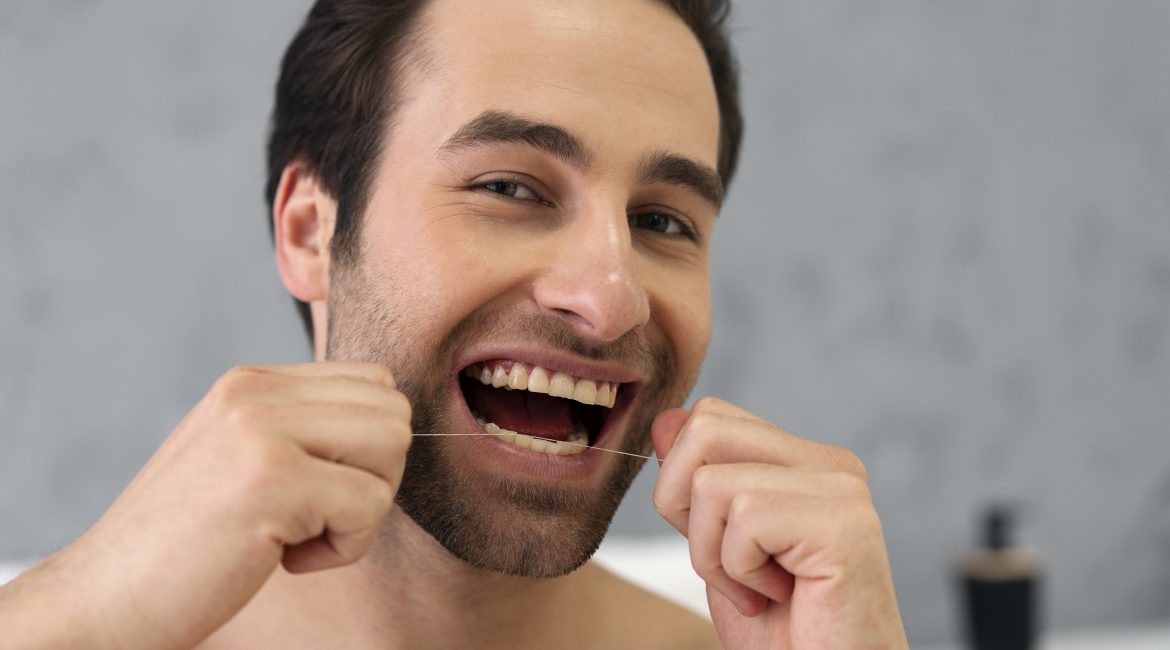Hey there, my friend! Let’s talk about a topic that might not be the most glamorous but is super important for our oral hygiene – flossing! Knowing how to floss properly and using effective flossing techniques can make a big difference in our dental health and overall well-being. You know, that step we often skip or rush through after brushing our teeth. But trust me, flossing properly can make a big difference in our dental health and overall well-being.
First things first, why is flossing so important? Well, brushing alone isn’t enough to remove all the food particles and plaque that can build up between our teeth and along the gumline. Flossing helps to reach those tight spaces where bacteria love to hide, preventing cavities, gum disease, and bad breath.
Now, let’s dive into how to floss like a pro. First, you’ll need about 18 inches of dental floss. Wrap most of it around your middle fingers, leaving about 1-2 inches of floss to work with. Use your thumbs and index fingers to guide the floss between your teeth, gently sliding it up and down along the sides of each tooth.
Be sure to curve the floss into a C shape around each tooth and slide it under the gumline. This helps remove plaque and debris that brushing alone can’t reach. Take care not to snap or force the floss, as this can irritate your gums and cause discomfort.
As you move from tooth to tooth, use a clean section of floss for each space. This prevents spreading bacteria from one tooth to another. Take your time and be thorough, flossing both sides of each tooth and along the gumline. It may take a few minutes, but your efforts will pay off in healthier teeth and gums.
Now, let’s address the types of floss available. There are waxed and unwaxed flosses, as well as flavored options to suit different preferences. Whether you prefer traditional floss, floss picks, or water flossers, choose the type that feels most comfortable and effective for you. The important thing is to floss regularly, ideally once a day, to maintain good oral hygiene.
If you find traditional flossing challenging or have trouble reaching certain areas, consider using floss picks or interdental brushes. These tools can be easier to maneuver and may encourage more consistent flossing habits. Remember, the goal is to clean between your teeth and along the gumline, no matter which tool you use.
Now, let’s debunk a common myth about flossing – bleeding gums. If your gums bleed when you floss, it’s often a sign of gum inflammation or gingivitis caused by plaque buildup. Don’t be alarmed; this can improve with regular flossing and proper oral hygiene. If bleeding persists or worsens, talk to your dentist for personalized advice and treatment.
Consistency is key when it comes to flossing. Make it a habit as part of your daily oral care routine, just like brushing your teeth. Set a reminder on your phone, keep floss in plain sight, or floss while watching TV – whatever helps you stick to your routine.
Lastly, let’s talk about the benefits of proper flossing. By removing plaque and debris from between your teeth, you’re helping to prevent cavities and gum disease. This can save you time, money, and discomfort from dental procedures down the road. Plus, fresh breath is always a bonus!
So, my friend, let’s commit to flossing like pros and taking care of our smiles. Your dentist will thank you, your gums will thank you, and most importantly, your teeth will thank you. Here’s to healthy habits and bright smiles!

